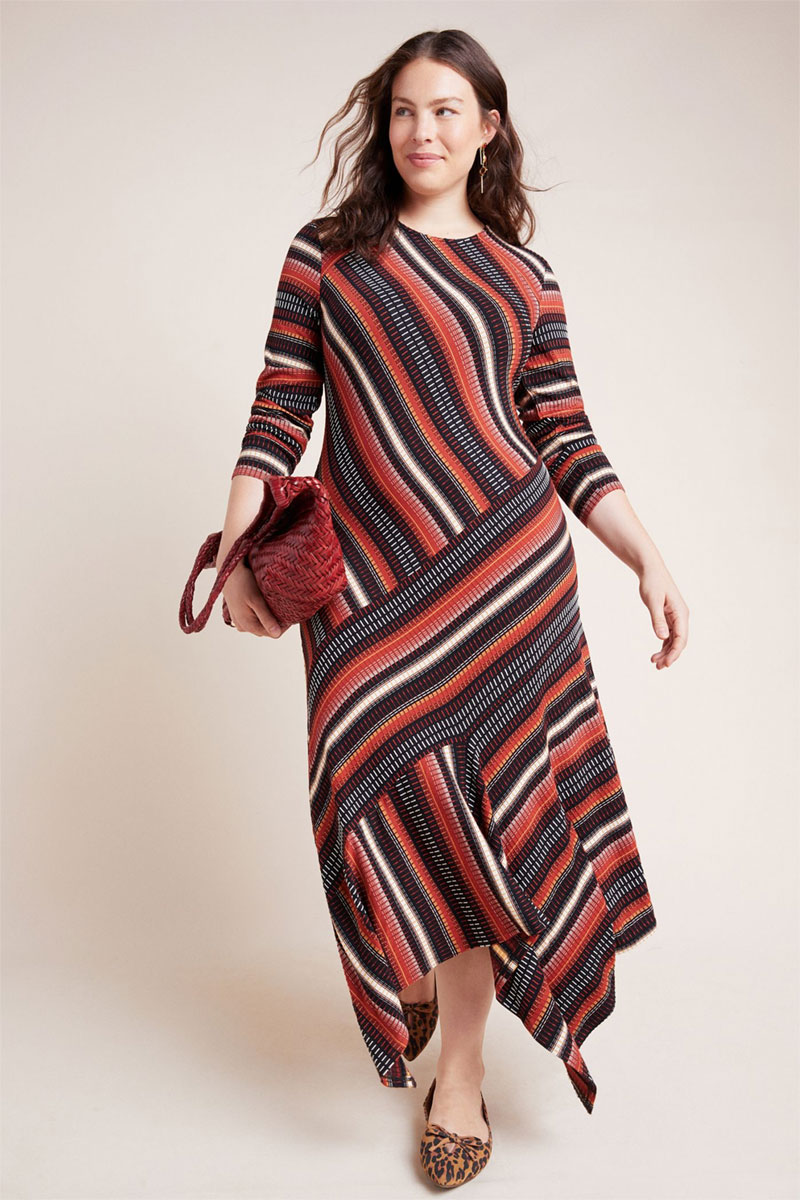Some commenters on the Team Midi or Team Maxi poll mentioned how unflattering and unfab they felt in a midi dress or skirt. To recap, midi hemlines finish anywhere between the bottom of the kneecap to below the calf muscle. I dress women for a living across a range of heights, ages, and body types. Trust me when I say that you do NOT need to be tall and thin to look amazing in a midi. My 4ft 10 clients wear midis as well as my 6ft clients, and their sizes run from 00P to US18.
That said, we manipulate the variables of the midi silhouette and style it in ways that create a more conventionally flattering visual effect. Here are five variables to consider when you’re wearing midis. Manipulating one or a few of the variables at a time can take you from feeling drab to fab.
1. Choose a Dress
It’s sometimes easier to feel fab in a midi dress than a midi skirt, because the single piece creates a vertical line. You don’t need to worry about finding the right top or the right level of contrast between the top and bottom. The long, lean line is there by default.
2. Choose a Tapered Silhouette
Midi dresses and skirts that are straight or tapered at the side seams are one of the easiest ways to wear a midi, especially when they’re just below the knee. Knitted tube skirts and their instantly conventionally flattering effect come to mind right away. My clients with apple and inverted triangle body types are particularly partial to wearing these types of midis.
2. Choose the Right Length
Sometimes, all you need to do is manipulate the length of a midi and Bob’s Your uncle. When you’re petite or regular height, you’ll find that wearing midis a little shorter does the visual trick. Try a length that’s just over the knee, or just above the calf muscle instead of a length that covers the calves.
3. Sport an Asymmetrical Hem
The magical effect of a diagonal line is not to be underestimated. Sporting a hi-low midi hemline gives it structure and elongates the leg line. Sporting a diagonal hemline that’s longer on the one side and shorter on the other is another way to add structure to the silhouette. This type of front diagonal hemline is particularly flattering on wider calves because it offsets the curve of the calf, whereas a straight hem across the widest part of the calf might accentuate it.
4. Add Waist Definition
Wearing a midi skirt or dress with waist definition gives it structure, which streamlines the silhouette and lengthens the leg line from the hips upward. The dress can have built-in waist definition, or you can create it with a waist-cinching wide belt. Tucking or partially tucking tops into midi skirts, or wearing a form-fitting untucked short top can add structure to a midi skirt. That’s especially effective with A-line or flared midi skirts.
5. Add Elongating Heels
And last, perhaps you’re a heels wearer and feel best in a midi when you add a low, mid or high heel to the outfit. That will lengthen the leg line, give you height, and perhaps elevate the dressy factor. But heels are not essential at all. I’m 5ft 6, only wear midi-length dresses and skirts, and never wear heels. I wear my midis with ballet flats, loafers and sneakers most of the time, and occasionally with a bootie, ankle strap pump, or shootie with a one and a quarter inch heel.
I prefer dresses and skirts with movement so I don’t wear straight or tapered hems. I also prefer dresses to skirts so I have many more midi dresses. I sport an assortment of midi lengths, some of which have asymmetrical hemlines. I define or surrender the waist of my midis, and am in flats most of the time.
Over to you. Do you wear midis, and how do you manipulate the variables to make them look flattering to your eye?










